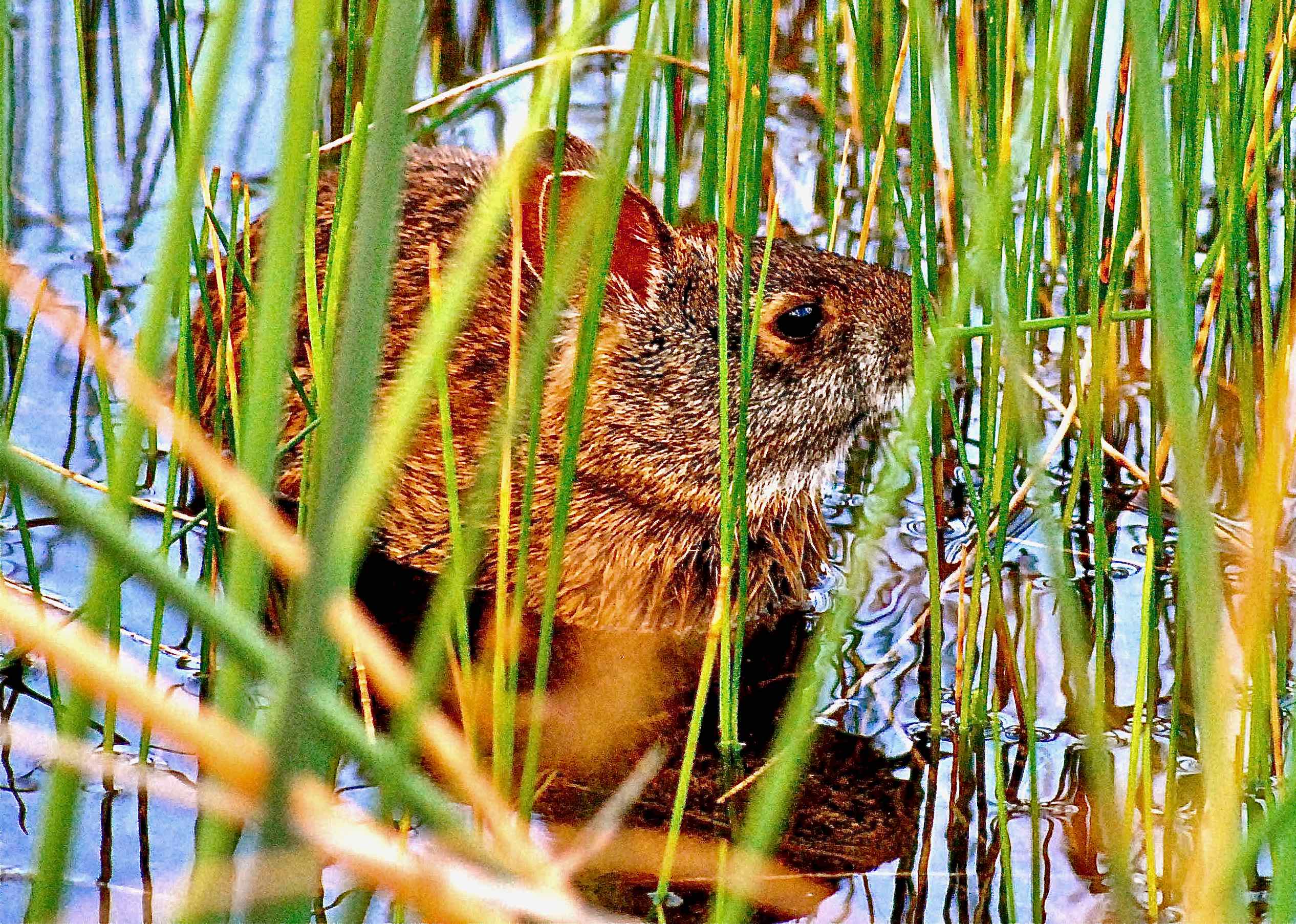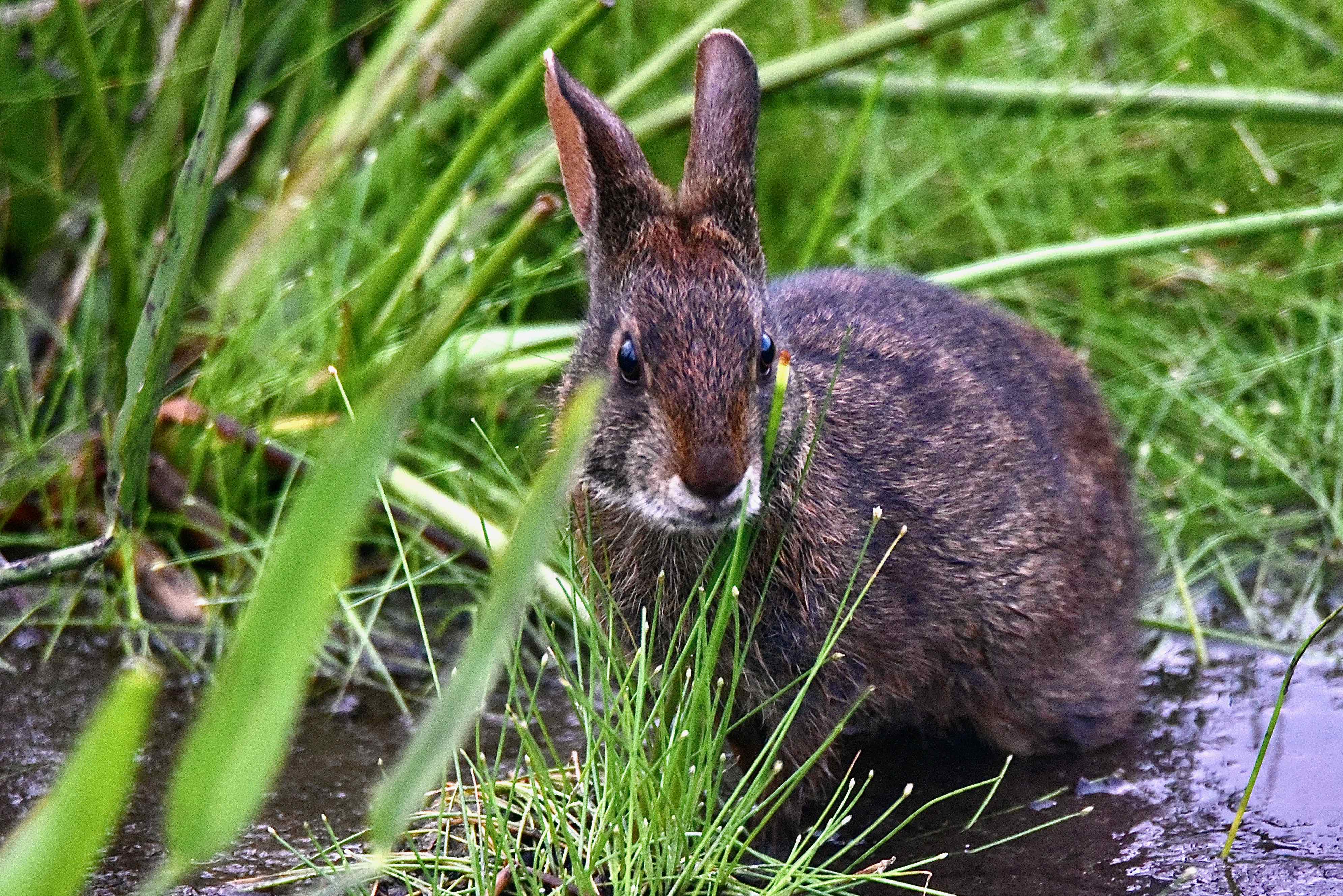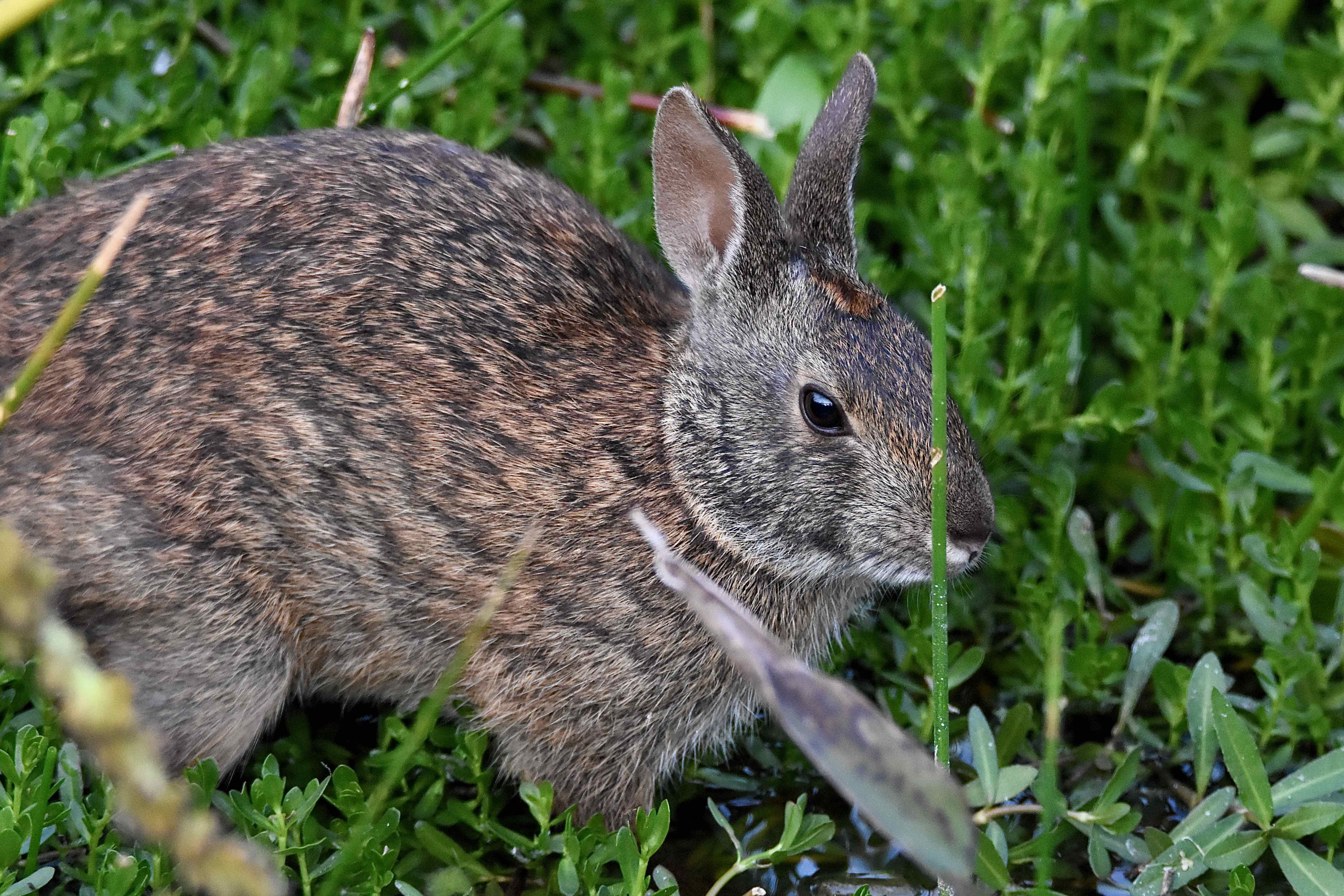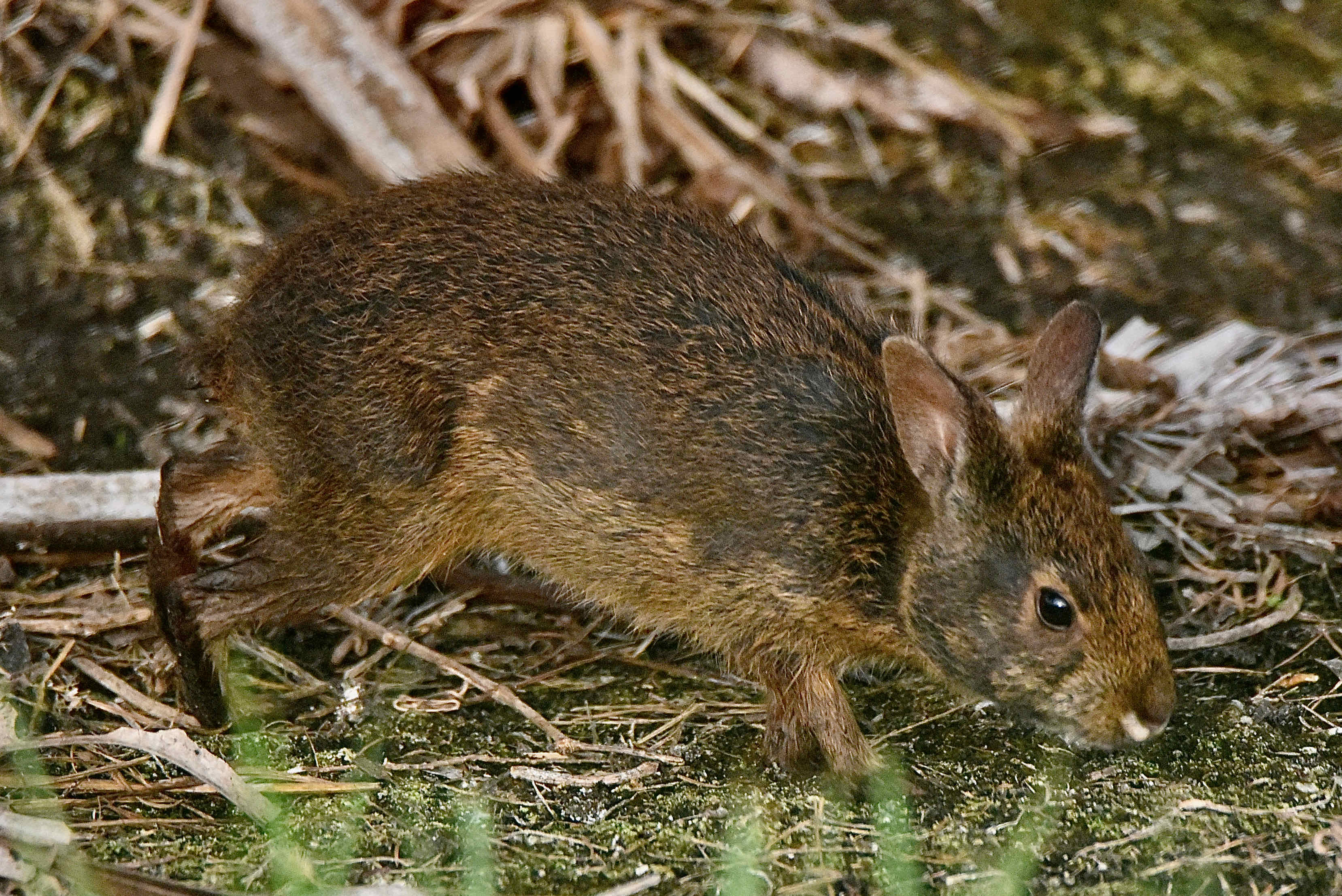
Marsh rabbit, photographed at Green Cay Nature Center, Boynton Beach, Palm Beach County, in May 2012.
Like Liam Neeson's character in the Taken series of movies, the marsh rabbit, Sylvilagus palustris, has "a particular set of skills" that can make life a little difficult for its enemies. No, it's not going to knock off an attacking hawk or snake, nor will it vow to kill any predator that harms one of its offspring.
But unlike others of its kind, the marsh rabbit is an excellent swimmer, crucial for an animal that lives in and near wet habitats and has a long, long list of hungry enemies and no means of defending itself other than evasion.
In appearance, the marsh basically is a cottontail rabbit without the cottontail. It looks smaller than the familiar eastern cottontail found throughout much of the eastern United States, but that's only because it has less hair. Really. There are anatomical differences besides the tail — it has shorter ears and legs and longer toe nails — but they're not nearly as obvious.
Marsh rabbits are found on the coastal plains from Virginia to Alabama and throughout Florida, but they only live where there is water. In Florida, that could be a fresh- or saltwater marsh, wet prairie or a flooded field. There are three subspecies of marsh rabbit, two of which are found in Florida — S. p. paludicola, common in the Peninsula, and S. P. hefneri, which is limited to the Lower Keys. Hefneri, by the way, honors Hugh M. Hefner for the money the Playboy Foundation has contributed for research into the animal. Hefneri is also listed as endangered.
Marsh rabbits situate their nests on the ground, in thickets or in logs. A female can have seven litters of two-to-four offspring in a year. They breed all year, but December to June is the peak. More females will breed than males. Gestation is four or five weeks; newborns are born blind and go from helpless to independent in about two weeks. They are solitary animals; females can be territorial when breeding. Both males and females can have multiple partners.
Marsh rabbits are vegetarians, and munch on grasses, sedges, cattails, duck potato, marsh pennywort and other plants found in or near wetlands. Farther north, where greens become scarce in winter, marsh rabbits will eat bark.
Unfortunately for marsh rabbits, foxes, bobcats, snakes gators, owls and hawks aren't vegetarians, and they all have bunny on their menu. Which is one very good reason why marsh rabbits are strong swimmers. If necessary, they'll dive into water to avoid capture. Remember they have less hair and longer toe nails than cottontails? Adaptions that help the marsh in the water.
Marsh rabbits also are nocturnal, as are foxes, bobcats, gators, owls and hawks, which is probably why they have so many offspring. The lifespan of a marsh rabbit in the wild can be up to four years, but most don't see a first birthday. Human hunters aren't much of a threat because of the marsh's less hospitable habitat. Marsh rabbits are members of Leporidae, the family of rabbits and hares.
Green Cay Nature Center



